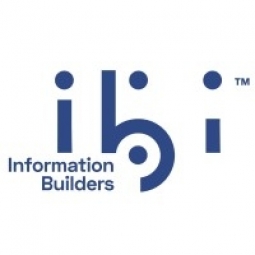Customer Company Size
Large Corporate
Region
- America
Country
- United States
Product
- WebFOCUS
- Rstat
- InfoAssist
Tech Stack
- Business Intelligence
- Predictive Analytics
- Data Visualization
Implementation Scale
- Enterprise-wide Deployment
Impact Metrics
- Productivity Improvements
- Customer Satisfaction
Technology Category
- Analytics & Modeling - Predictive Analytics
- Analytics & Modeling - Real Time Analytics
Applicable Industries
- Education
Applicable Functions
- Sales & Marketing
- Business Operation
Use Cases
- Predictive Maintenance
- Demand Planning & Forecasting
Services
- Data Science Services
- System Integration
About The Customer
Taylor University is a coeducational, non-denominational Christian liberal arts college located on a 952-acre campus in Upland, Indiana. Founded in 1846, the university is reliant on student tuition for its institutional budget. Like most small private colleges, institutional funds are leveraged to encourage enrollment to meet annual budget goals. This process, known as discounting, lowers the cost for students to attend college. As discount rates rise across the industry, operational efficiency is needed to meet bottom-line revenue goals. The admissions department at Taylor University consists of a team of five full-time recruiters who process an inquiry pool of 50,000 prospective students to fill about 500 enrollment spots.
The Challenge
Taylor University, a non-denominational Christian liberal arts college, was looking to improve operational and financial performance by gathering data about various campus activities such as recruiting, marketing, fundraising, registration, and institutional research. The university was reliant on student tuition for its institutional budget and as discount rates rise across the industry, operational efficiency was needed to meet bottom-line revenue goals. The admissions department, in particular, faced the challenge of processing an inquiry pool of 50,000 prospective students to fill about 500 enrollment spots. The university needed a predictive analytics tool that would allow them to strategically target inquiries to improve marketing, recruitment, and enrollment.
The Solution
Taylor University adopted Information Builders’ WebFOCUS business intelligence (BI) and analytics platform as its enterprise standard to foster a culture of “data-informed decision-making.” The platform allows non-technical users to visualize information through easy-to-use InfoApps™ – self-service applications that let users easily explore data through charts, graphs, reports, and other interactive content. The university also uses advanced analytics to do predictive modeling, machine learning, and data mining in preparation for the future. For example, in the admissions department, WebFOCUS RStat guides tactical recruitment activities. RStat helps recruiters determine the best prospective students and in the future, it will also indicate which ones are most likely to enroll. The admissions department built predictive models with RStat that monitor the progression of students through the sales funnel, computing the relative probabilities that help the sales and marketing groups target their efforts.
Operational Impact
Quantitative Benefit

Case Study missing?
Start adding your own!
Register with your work email and create a new case study profile for your business.
Related Case Studies.

Case Study
Revolutionizing Medical Training in India: GSL Smart Lab and the LAP Mentor
The GSL SMART Lab, a collective effort of the GSL College of Medicine and the GSL College of Nursing and Health Science, was facing a challenge in providing superior training to healthcare professionals. As clinical medicine was becoming more focused on patient safety and quality of care, the need for medical simulation to bridge the educational gap between the classroom and the clinical environment was becoming increasingly apparent. Dr. Sandeep Ganni, the director of the GSL SMART Lab, envisioned a world-class surgical and medical training center where physicians and healthcare professionals could learn skills through simulation training. He was looking for different simulators for different specialties to provide both basic and advanced simulation training. For laparoscopic surgery, he was interested in a high fidelity simulator that could provide basic surgical and suturing skills training for international accreditation as well as specific hands-on training in complex laparoscopic procedures for practicing physicians in India.

Case Study
IoT platform Enables Safety Solutions for U.S. School Districts
Designed to alert drivers when schoolchildren are present, especially in low-visibility conditions, school-zone flasher signals are typically updated manually at each school. The switching is based on the school calendar and manually changed when an unexpected early dismissal occurs, as in the case of a weather-event altering the normal schedule. The process to reprogram the flashers requires a significant effort by school district personnel to implement due to the large number of warning flashers installed across an entire school district.

Case Study
Implementing Robotic Surgery Training Simulator for Enhanced Surgical Proficiency
Fundacio Puigvert, a leading European medical center specializing in Urology, Nephrology, and Andrology, faced a significant challenge in training its surgical residents. The institution recognized the need for a more standardized and comprehensive training curriculum, particularly in the area of robotic surgery. The challenge was underscored by two independent studies showing that less than 5% of residents in Italian and German residency programs could perform major or complex procedures by the end of their residency. The institution sought to establish a virtual reality simulation lab that would include endourological, laparoscopic, and robotic platforms. However, they needed a simulator that could replicate both the hardware and software of the robotic Da Vinci console used in the operating room, without being connected to the actual physical console. They also required a system that could provide both basic and advanced simulation training, and a metrics system to assess the proficiency of the trainees before they performed surgical procedures in the operating theater.

Case Study
Edinburgh Napier University streamlines long-distance learning with Cisco WebEX
• Geographically dispersed campus made in-person meetings costly and inconvenient.• Distance-learning programs in Malaysia, India, and China required dependable, user-friendly online tools to maximize interaction in collaborative workspaces.• Virtual learning environment required a separate sign-in process, resulting in a significant administrative burden for IT staff and limited adoption of collaboration technology.

Case Study
8x increased productivity with VKS
Before VKS, a teacher would spend a lot of time showing a group of 22 students how to build a set of stairs within a semester of 120 hours. Along with not leaving the teacher much time to provide one-on-one support for each student to properly learn carpentry, it also left a considerable amount of room for error. Key information would be misinterpreted or lost as the class was taught in the typical show-and-tell way.

Case Study
Scalable IoT Empowering GreenFlex's Sustainable Growth
GreenFlex, a company that supports sustainable development, decarbonization, and energy efficiency, faced several challenges in its quest to expand its business. The company needed to deploy a robust and sustainable IoT technology to support its growth. It was crucial for them to monitor and control devices at customer sites in a safe and reliable manner. They also needed to integrate devices across a range of communication protocols and gather and act on data to meet efficiency targets. GreenFlex had previously built IoT capabilities into its digital platform, GreenFlexIQ, to monitor and manage customer sites remotely. However, they soon realized that they needed a new platform to support their ambitions. They needed a platform that could scale to connect more devices for production management and make it easier for the operations team to manage devices in the field.







